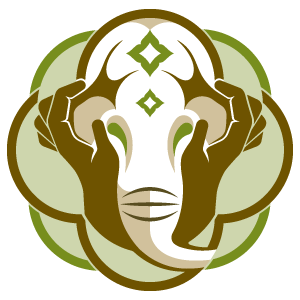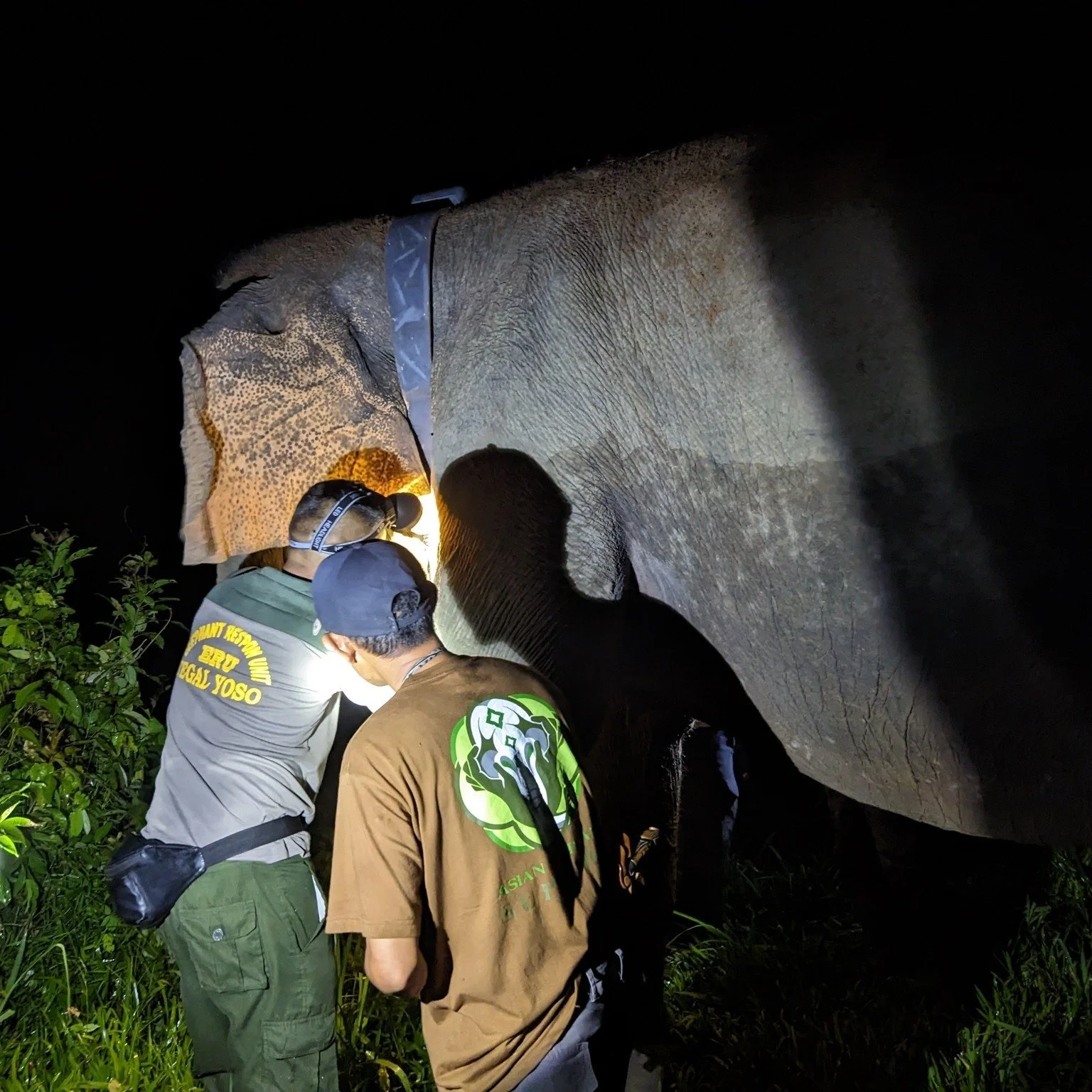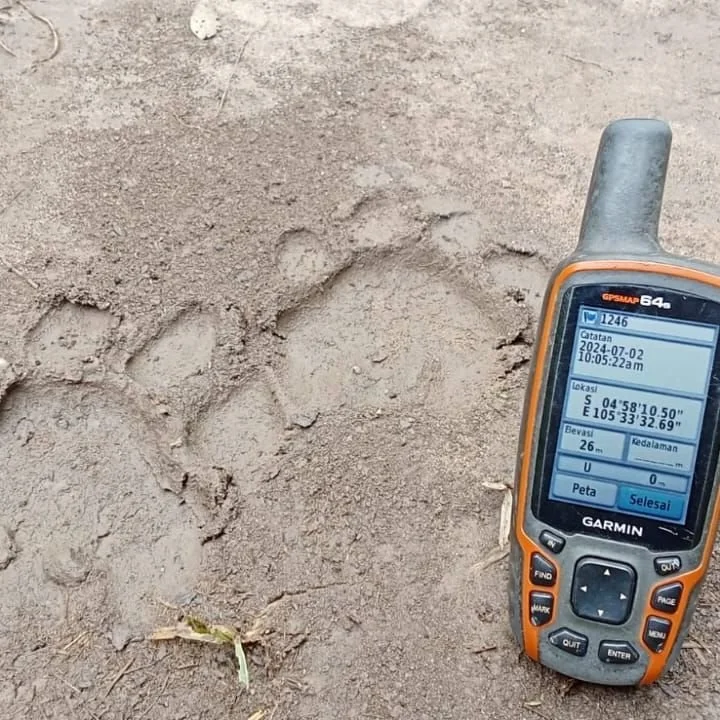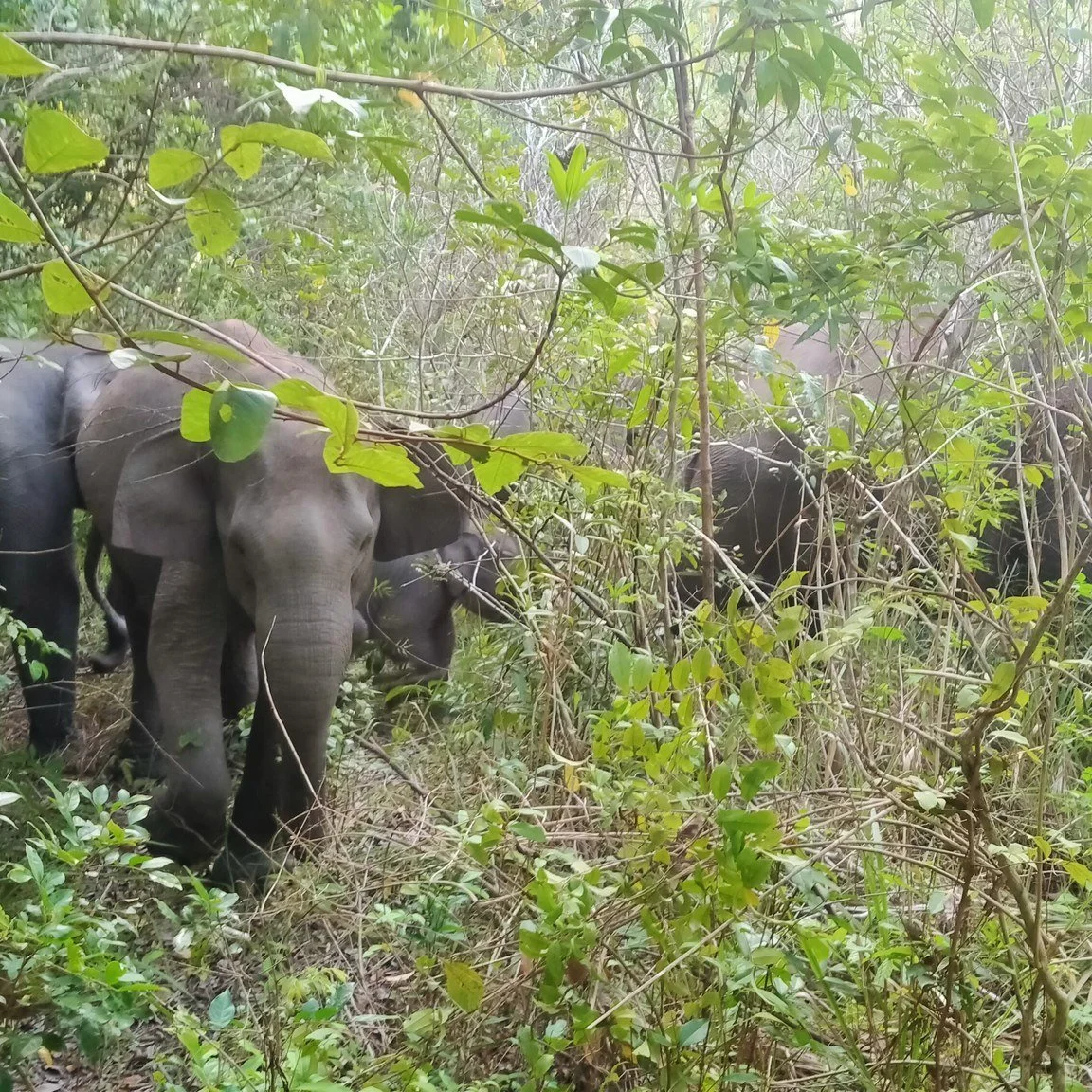With your generosity, we can help the Veterinarians from the Wildlife Ambulance of the Syiah Kuala University Veterinary Faculty in Aceh provide routine healthcare to Sumatran elephants and other critically endangered wildlife!
Veterinarian assesses elephant while on scale platform
The Wildlife Ambulance Veterinarians conduct routine health checks of the patrol elephants from the Elephant Response Units in Way Kambas National Park. These visits include weighing the elephants to assess their body condition, providing regular deworming, and administering necessary treatments. The Veterinarians are also on call to respond to any medical emergencies.
Elephant stands on scale platform for weigh assessment
We are grateful for the efforts of the veterinarians of the Wildlife Ambulance and the field staff who care for critically endangered Sumatran elephants and other wildlife.
Thank you to all partners!
YOU can HELP make a difference for elephants in Asia by donating HERE!




























